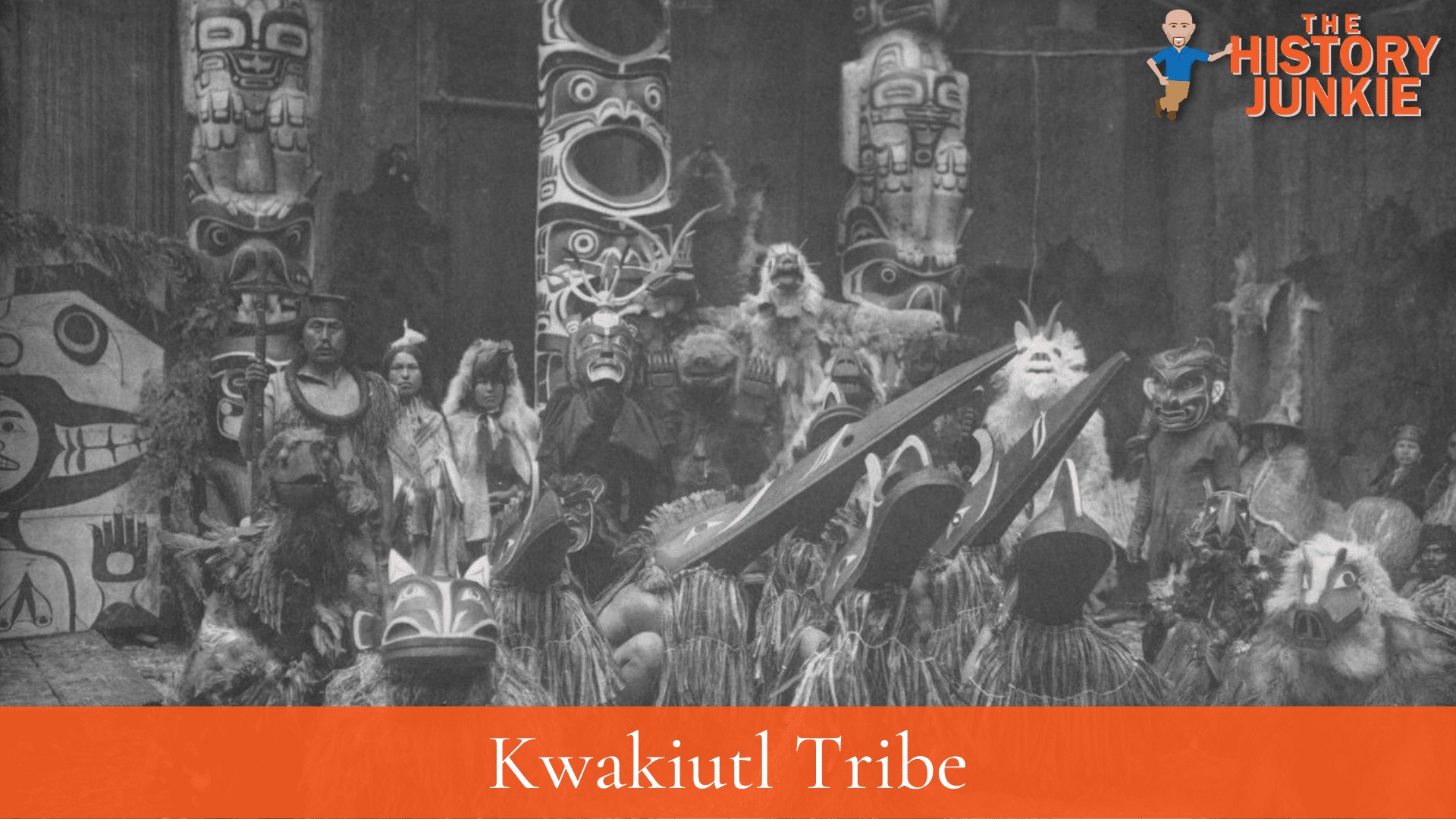The Kwakiutl Tribe is a Northwest Indian Tribe located on Vancouver Island and nearby Discovery Islands.

Their first contact with Europeans was through the famous explorer George Vancouver in 1792, and were known The tribe have a unique culture that the Europeans found fascinating.
They had their own form of art and even performed at the 1893 World's Columbian Exposition in Chicago.
Jump to:
History
The Kwakiutl tribe has a story of origin that is similar to other Native American Tribes.
anthropologist Frank Boas writes this about their origins:
Kwakiutl's oral history says their ancestors came in the form of animals by way of land, sea, or underground. When one of these ancestral animals arrived at a given spot, it discarded its animal appearance and became human. Animals that figure in these origin myths include the Thunderbird, his brother Kolas, the seagull, the orca, the grizzly bear, or the chief ghost. Some ancestors have human origins and are said to come from distant places.
Like most of the Northwest tribes, the Kwakiutl tribe's primary source of food was fish, with some hunting and agriculture.
The tribe practiced slavery, which was often the case with many Native Americans. (Many tribes would enslave other members of a tribe they conquered)
Despite this practice, they had a different idea of wealth. Wealth and status were not determined by how much you had but by how much you had to give away. This act of giving away your wealth was one of the main acts in a potlatch.
Disease
The primary reason that Native Americans were unable to flourish in North America after the arrival of Europeans was disease. Although the Kwakiutl Tribe did not make contact with Europeans until the late 1800s, it still occurred before vaccines were available to the native population.
The tribe, along with many other tribes local to them, suffered through the 1862 Pacific Northwest smallpox epidemic that killed large percentages of the native population. Most tribes would lose 50% of their people, while some would lose close to 90%.
Smallpox was devastating to these tribes and, for many tribes, westward expansion from Americans after this epidemic crushed them. The Kwakiutl Tribe was able to survive this terrible epidemic due to their location, so despite their losses, they at least maintained their tribe's identity.
Culture
The Kwakiutl are a highly stratified bilinear culture of the Pacific Northwest. They are many separate nations, each with its own history, culture, and governance.
The Nations commonly each had a head chief, who acted as the leader of the nation, with numerous hereditary clan or family chiefs below him. In some of the nations, there also existed Eagle Chiefs, but this was a separate society within the main society and applied to the potlatch only.
The Kwakiutl Tribe is one of the few bilinear cultures. Traditionally, the rights of the family would be passed down through the paternal side, but on rare occasions, the rights could be passed on to the maternal side of the family.
Within the pre-colonization times, the Kwakiutl were organized into three classes:
- Nobles
- Commoners
- Slaves.
The Kwakiutl shared many cultural and political alliances with numerous neighbors in the area, including the Nuu-chah-nulth, Heiltsuk, Wuikinuxv, and some Coast Salish.
Arts
In the old times, the Kwakiutl believed that art symbolized a common underlying element shared by all species.
Kwakiutl arts consist of a diverse range of crafts, including totems, masks, textiles, jewelry, and carved objects, ranging in size from transformation masks to 40 ft tall totem poles.
Cedar wood was the preferred medium for sculpting and carving projects as it was readily available in the native Kwakiutl regions.
Totems were carved with bold cuts, a relative degree of realism, and an emphatic use of paints. Masks make up a large portion of Kwakiutl art, as masks are important in the portrayal of the characters central to Kwakiutl dance ceremonies.
Woven textiles included the Chilkat blanket, dance aprons, and button cloaks, each patterned with Kwakiutl designs.
The Kwakiutl used a variety of objects for jewelry, including ivory, bone, abalone shells, copper, silver, and more. Adornments were frequently found on the clothes of important persons.
Conclusion
The Kwakiutl Tribe was a vibrant tribe that lived on Vancouver Island and other surrounding areas that thrived for many centuries.
There is not a record of much violence and turmoil, unlike what is seen with the Northeast and Southeast tribes. However, they did practice slavery, which would suggest some warfare.
The tribe survived the epidemics that destroyed many native tribes within their area and now has a population of 3,665 and continues to grow, although they are growing at a slow rate.
